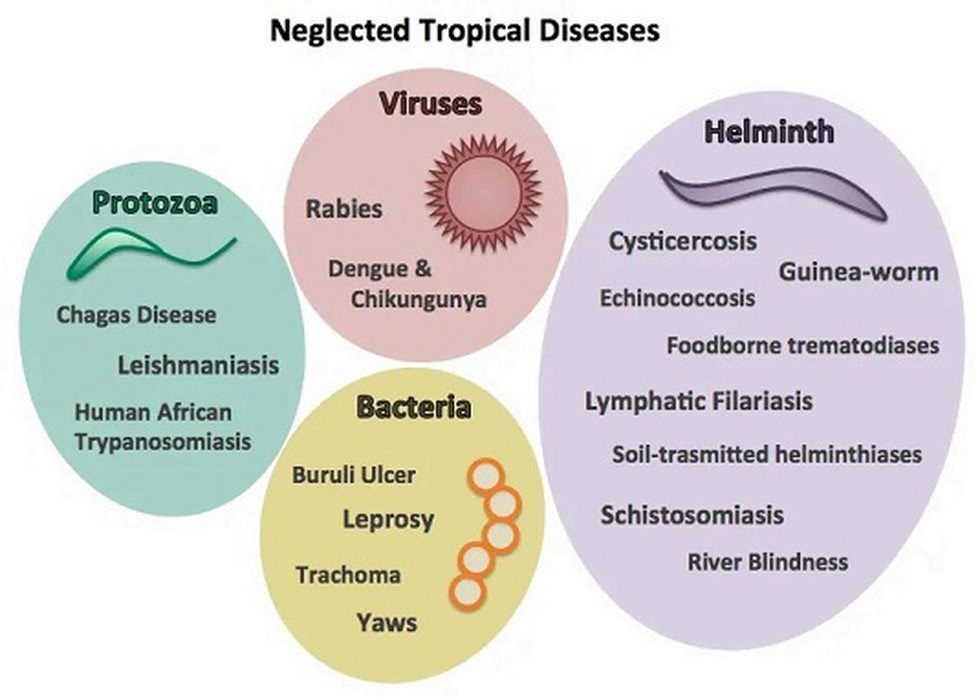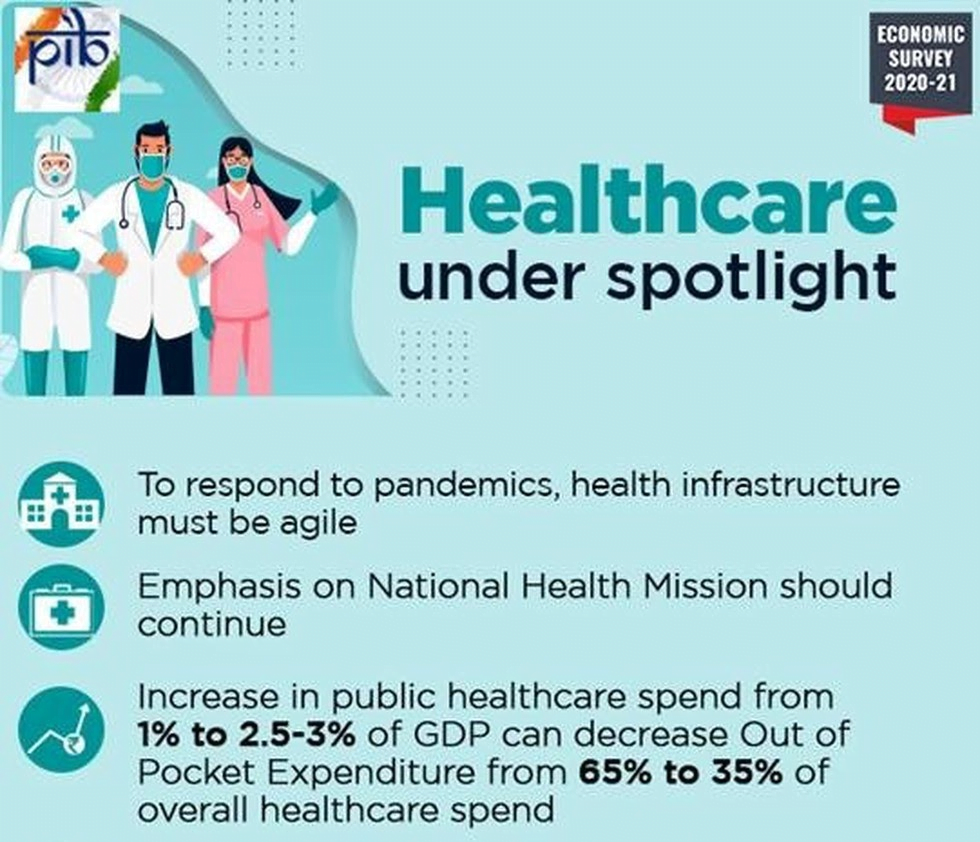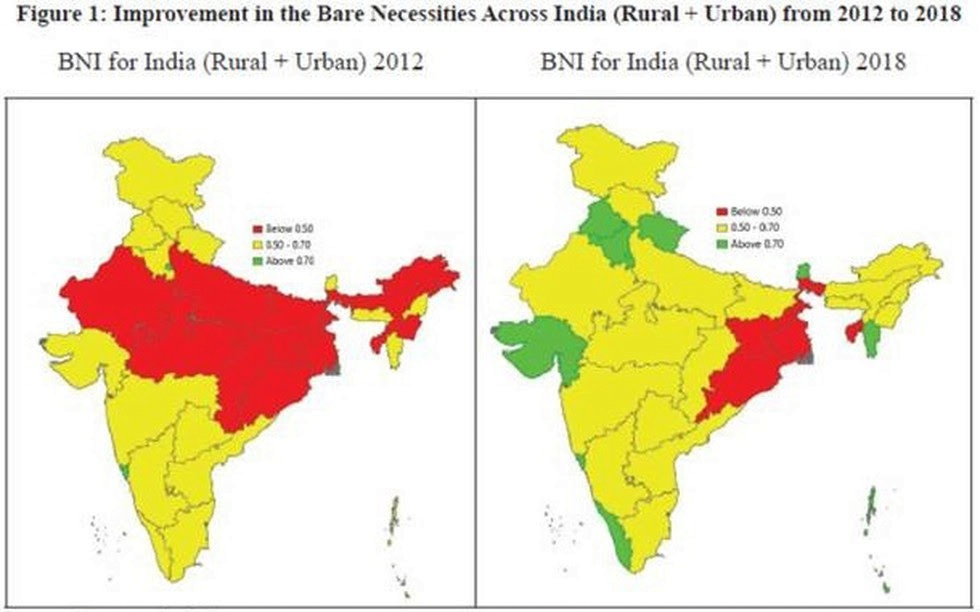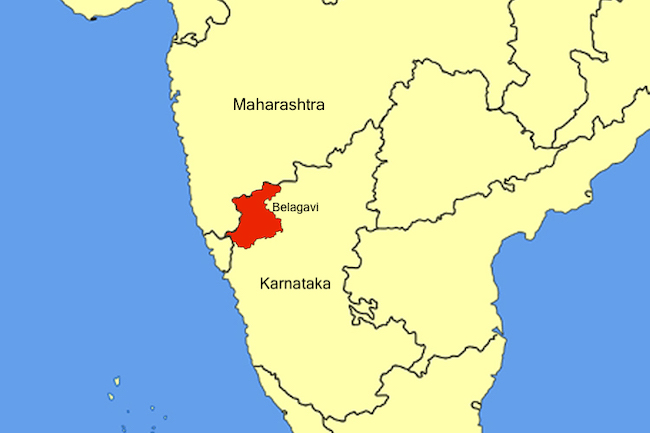IASbaba's Daily Current Affairs Analysis
Archives
(PRELIMS + MAINS FOCUS)
World Neglected Tropical Diseases (NTD) Day
Part of: GS Prelims and GS- II – Health
In news
- January 30, 2021 will mark the second annual World Neglected Tropical Diseases (NTD) Day, highlighting the global community’s commitment to ending Neglected Tropical Diseases.

Key takeaways
- On World NTD Day, more than 50 landmarks representing 25 nations across the world will be lit up to celebrate how far we have come together in beating NTDs.
- India too will join these countries, by illuminating UNESCO world heritage site Qutub Minar.
- Background: Originally announced by the Crown Prince Court of Abu Dhabi at the 2019 Reaching the Last Mile Forum, hundreds of partners signed up to mark World NTD Day and demand action to Face NTDs and End The Neglect.
Do you know?
- Neglected tropical diseases (NTDs) are a diverse group of tropical infections which are common in low-income populations in developing regions of Africa, Asia, and the Americas.
- They are caused by a variety of pathogens such as viruses, bacteria, protozoa and parasitic worms (helminths).
- They include dengue, rabies, blinding trachoma, Buruli ulcer, endemic treponematoses (yaws), leprosy (Hansen disease) etc.
- These diseases are contrasted with the big three infectious diseases (HIV/AIDS, tuberculosis, and malaria), which generally receive greater treatment and research funding.
- 1 in 5 people around the world are affected by NTDs.
- India is home to the world’s largest absolute burden of at least 11 of these major neglected tropical diseases.
1st PPP Research Reactor For Production Of Nuclear Medicines
Part of: GS Prelims and GS- II – Health & GS-III – Sci & Tech
In news
- Bhabha Atomic Research Centre (BARC), the premier research organization of the Department of Atomic Energy (DAE), has evolved a design for the first PPP Research Reactor for production of Nuclear Medicines.
Key takeaways
- In the proposed partnership, the private entities will get exclusive rights to process and market the isotopes produced in the research reactor, in lieu of investing in the reactor and processing facilities.
- Background: In May 2020, Union Finance Minister announced establishment of a Research Reactor in PPP mode for production of medical isotopes as a part of Aatma Nirbhar Bharat initiatives for DAE.
- This project will be a major step towards making India self-reliant in key radio isotopes used in medical and industrial applications.
- Globally, nuclear medicine is a USD 6 Billion market and is expected to grow rapidly to reach USD 30 Billion by 2030. India produces all major isotopes in the country under the aegis of BARC.
Agreement for the financial support to STARS Project signed between India and World Bank
Part of: GS Prelims and GS- II – Education; International relations
In news
- Agreement for the financial support of the implementation of Strengthening Teaching-Learning and Results for States (STARS) project was signed between Department of Economic Affairs (DEA) and World Bank along with Ministry of Education.
Important value additions
- The proposal of STARS project was approved in October 2020.
- The Program envisions improving the overall monitoring and measurement activities in the Indian school education system through interventions in 6 States viz. Himachal Pradesh, Rajasthan, Maharashtra, Madhya Pradesh, Kerala and Odisha.
- STARS project would be implemented as a new Centrally Sponsored Scheme.
- Implementing Ministry/agency: Department of School Education and Literacy (DoSEL), Ministry of Education
- At the State level, the project will be implemented through the integrated State Implementation Society (SIS) for Samagra Shiksha.
Do you know?
- The total project cost of STARS project is Rs 5718 crore with the financial support of World Bank amounting to US $ 500 million.
- The proposed World Bank support under STARS is primarily in the form of a results-based financing instrument called Program for Results (PforR).
- A State Incentive Grant (SIG) will be used to encourage States to meet desired project outcomes.
Economic Survey 2020-21: Health
Part of: GS Prelims and GS- II – Health
In news
- The Economic Survey 2020-21 has strongly recommended an increase in public spending on healthcare services from 1% to 2.5-3% of GDP, as envisaged in the National Health Policy 2017.

Key takeaways
- It notes that this can significantly reduce the Out-of-Pocket-Expenditure (OOPE) from 65% to 35% of the overall healthcare spend.
- The Survey has recommended that the National Health mission (NHM) should be continued in conjunction to with Ayushman Bharat Yojana
- Drawing from the lessons learned during the ongoing global pandemic of COVID-19, the Economic Survey makes a strong case for complete adoption of telemedicine for meeting the last-mile challenges of healthcare delivery in the country.
Economic Survey 2020-21: Education
Part of: GS Prelims and GS- II – Education
In news
- The Economic Survey 2020-21 states that online schooling took off in a big way during the COVID-19 pandemic.
Key takeaways
- The percentage of enrolled children from government and private schools owning a smartphone increased enormously from 36.5% in 2018 to 61.8% in 2020 in rural India.
- PM eVIDYA is a comprehensive initiative to unify all efforts related to digital/online/on-air education to enable multi-mode and equitable access to education for students and teachers.
- Around 92 courses have started and 1.5 crore students are enrolled under Swayam MOOCs which are online courses relating to NIOS.
- PRAGYATA guidelines on digital education have been developed with a focus on online/blended/digital education for students who are presently at home due to closure of schools.
- The MANODARPAN initiative for psychological support has been included in Atma Nirbhar Bharat Abhiyan.
- India has attained a literacy level of almost 96% at the elementary school level.
- As per National Sample Survey (NSS), the literacy rate of persons of age 7 years and above at the All India level stood at 77.7 per cent.
Related articles:
- Steps taken by the Government to ensure quality education: Click here
Economic Survey 2020-21: Skill Development
Part of: GS Prelims and GS- III – Skill development
In news
- The Economic Survey 2020-21 states that only 2.4% of the workforce of age 15-59 years has received formal vocational/technical training and another 8.9% of the workforce received training through informal sources.
Key takeaways
- Out of the 8.9% workforce who received non-formal training, the largest chunk is contributed by on-the-job training (3.3 per cent), followed by self-learning (2.5 per cent) and hereditary sources (2.1 per cent) and other sources (1 per cent).
- Among those who received formal training, the most opted training course is IT-ITeS among both males and females.
- The Unified Skill Regulator- National Council for Vocational Education and Training (NCVET) was operationalized recently.
- Pradhan Mantri Kaushal Vikas Yojana 3.0 was rolled out in 2020-21 with a tentative target to skill 8 lakh candidates including migrants.
Related articles:
- Third Phase Of Pradhan Mantri Kaushal Vikas Yojana (PMKVY 3.0) launched: Click here
Economic Survey 2020-21: Bare Necessities
Part of: GS Prelims and GS- I – Society
In news
- Economic Survey 2020-21 constructs a Bare Necessities Index (BNI) at the rural, urban and all India level.

Key takeaways
- The BNI summarises 26 indicators on five dimensions viz., water, sanitation, housing, micro-environment, and other facilities.
- The BNI has been created for all States for 2012 and 2018 using data from two NSO rounds viz., 69th and 76th on Drinking Water, Sanitation, Hygiene and Housing Condition in India.
- In most of the States the access to the Bare Necessities for the household in 2018 is significantly better compared to 2012.
- Access to drinking water to households in most of the States has improved in 2018 compared to 2012 in rural as well as urban areas.
- Regional disparity in access to sanitation has declined as the States having low access to sanitation in 2012 have gained more.
- Survey observes improvement in Housing Index and reduction in inter-States disparities with disproportionate benefits for the lowest income group in 2018 vis-à-vis 2012.
- The economic Survey also notes improvement in micro environment for all States in 2018 except for Assam in rural and Odisha and Assam in urban areas as compared to 2012.
- Survey also points to a positive correlation between access to bare necessities and better health and education outcome. It observes improvement in child survival, decline in still births, malnutrition, and infant mortality with improved access to sanitation and clean drinking water.
Economic Survey 2020-21: Agriculture
- According to the Economic Survey, 2020-21The Agriculture and Allied activities clocked a growth of 3.4% at constant prices during 2020-21 (first advance estimate).

Key takeaways
- As per the Provisional Estimates of National Income released by CSO on 29th May, 2020, the share of Agriculture and Allied Sectors in Gross Value Added (GVA) of the country at current prices is 17.8% for the year 2019-20.
- In the Agriculture year 2019-20 (as per Fourth Advance Estimates), total food grain production in the country is estimated at record 296.65 million tonnes which is higher by 11.44 million tonnes than the production of food grain of 285.21 million tonnes achieved during 2018-19.
- In 2019-20, the major agricultural and allied export destinations were USA, Saudi Arabia, Iran, Nepal and Bangladesh.
- The top agriculture and related products exported from India were marine products, basmati rice, buffalo meat, spices, non-basmati rice, cotton raw, oil meals, sugar, castor oil and tea.
- Livestock sector contributed 4.19% of total GVA in 2018-19.
- During the last 5 years ending 2018-19, Food Processing Industries (FPI) sector has been growing at an Average Annual Growth Rate (AAGR) of around 9.99% as compared to around 3.12% in Agriculture and 8.25% in Manufacturing at 2011-12 prices.
(Mains Focus)
FEDERALISM/ MODERN HISTORY
Topic:
- GS-1: Post-independence consolidation and reorganization within the country.
- GS-2: Issues and challenges pertaining to the federal structure
Maharashtra-Karnataka border dispute
Context: Recently, Maharashtra CM released a book titled Maharashtra-Karnataka Boundary Dispute: Struggle and Pledge. The book is a collection of articles, news, and other material on the demand that Marathi-speaking areas in Karnataka should be integrated into Maharashtra.
In News
- Maharashtra Chief Minister Uddhav Thackeray saying his government is committed to incorporating areas of Karnataka where Marathi-speaking people are in majority into his state has added fuel to a controversy that has been simmering for the last six decades.
- Belgaum or Belagavi, which has a large Marathi-speaking population, is currently part of Karnataka and is claimed by Maharashtra.
- While Maharashtra has gone to the Supreme Court over this land dispute, Karnataka has declared Belagavi its second capital

Image Source: News Minute
Origin of the Problem
- Multi-lingual Population in border district: Belgaum, which was later renamed Belagavi, is located in the northern part of today’s Karnataka and shares a border with Maharashtra’s Kohlapur district. Belgavi district has both Kannada and Marathi speakers.
- Colonial Times: During the British Raj, the Belgaum region was part of the Bombay Presidency, which included Karnataka districts such as Vijayapura, Belagavi, Dharwad and Uttara-Kannada.
- 1881 Census data: As per 1881 census, Belgaum had 864,014 people of which 556,397 were Kannada-speaking (64.39%), while 225,008 were Marathi-speaking (26.04%). However, in 1948, the Belgaum Municipality that was dominated by Marathi speaking politicians requested the Centre that the district be incorporated into the proposed Maharashtra state.
- Post-Independence Reorganisation: The States Reorganisation Act of 1956 made Belgaum and 10 talukas of Bombay State a part of the then Mysore State (which was renamed Karnataka in 1973). While demarcating borders, the Reorganisation of States Commission sought to include talukas with a Kannada-speaking population of more than 50 per cent in Mysore.
- Objection Raised by Maharashtra: Maharashtra objected to this by claiming that that in 1956, Marathi-speakers outnumbered Kannada-speakers in those areas. It submitted a memorandum to the Ministry of Home Affairs, demanding 7,000 sq km that included 814 villages, and three urban settlements of Belagavi, Karwar and Nippani (all were part of Bombay Presidency in British Raj), to be added to Maharashtra.
- Demands by Karnataka: On the other hand, Karnataka has sought areas in Kolhapur, Sholapur and Sangli districts from Maharashtra, and Kasargod from Kerala to be included in its state.
Talks to Resolve the Dispute
- Committee Formation: As the dispute was raging on, both states decided to resolve the matter through talks. In 1960, both states decided to set up a four-member committee with two members from each state, to study and submit a report.
- Offer to exchange of areas: During this process, Maharashtra offered to transfer 260 Kannada-speaking villages in return for its demand for 814 villages and three urban settlements.
- Lack of Consensus: However, both states could not come to any consensus following the findings of the committee. In the years that followed, several talks were held between the two governments, which ended without a resolution
The Mahajan Commission
- Commission Formed by Union Government: Following the protest from Maharashtra government, in 1966, the central government formed Commission under former chief justice Mehr Chand Mahajan to look into the issue. It was also asked to look into Karnataka’s demand for integration of Kannada-speaking areas in Kasargod in Kerala. Commission submitted report to the Union government in 1967 and was placed in Parliament in 1972.
- Recommendation of Commission: The commission rejected Maharashtra’s claim over Belagavi city while recommending the transfer of about 260 villages in the border to Maharashtra and about 250 villages in Maharashtra to Karnataka.
- Kasargod Issue: The Mahajan Commission also upheld Mysore’s claims for the areas in Kerala and recommended the transfer of the entire Kasargod taluk in Kerala, minus eight villages lying south of the Chandragiri river to Mysore
Response to Mahajan Commission Report:
- Maharashtra: The Maharashtra government rejected the repot and termed the findings of the reports as biased and self-contradictory because the “formula” applied for Kasaragod was not applied for Belgaum. Maharashtra Government insisted that the report is against the “wish of people” of Belgaum.
- Kerala: The Kerala government refuted the recommendations of the report and refused to hand over Kasaragod to Karnataka.
- Karnataka: The Karnataka government welcomed the report and continued to press for the implementation of the report or maintaining status quo.
- Centre: Despite demands from Karnataka, the Centre never implemented the recommendations of the report. Rather it has been non-committal on resolving the border dispute.
Case in Supreme Court
- In 2004, the Maharashtra government moved the Supreme Court under Article 131(b) of the Constitution.
- In its petition, the Maharashtra government claimed that the Marathi-speaking population in Karnataka was being sidelined and that there was a feeling of ‘insecurity among them.’
- Maharashtra asked that 814 villages in Belgaum, Karwar, Bidar and Gulbarga districts in Karnataka be moved under their jurisdiction since it had a majority of Marathi-speaking people.
- That case is still being heard by the Supreme Court.
Maharashtra’s Arguments:
- Maharashtra’s claim to seek the readjustment of its border was on the basis of contiguity, relative linguistic majority and wishes of the people.
- If the claim over Belagavi and surrounding areas was based on Marathi-speaking people and linguistic homogeneity, it laid its claim over Karwar and Supa where Konkani is spoken by citing Konkani as a dialect of Marathi.
- Its argument was based on the theory of village being the unit for calculation and enumerated linguistic population in each village.
- Maharashtra also points out the historical fact that the revenue records in these Marathi-speaking areas are also kept in Marathi.
Karnataka’s Arguments:
- Karnataka points out that when Congress, which redrew its circles on linguistic basis in 1920, included Belagavi in the Karnataka Provincial Congress Committee. Besides, the States Reorganisation Commission vested Belagavi with Karnataka.
- Karnataka holds the view that the settlement of boundaries as per the States Reorganisation Act is final. It has argued that the boundary of the State was neither tentative nor flexible.
- The State argues that the issue would reopen border issues that have not been contemplated under the Act, and that such a demand should not be permitted.
- As the legal battle continues, Karnataka declared Belagavi its second capital, changed the name of Belgaum to Belagavi and also holds its winter session at the newly constructed Vidhan Soudha in Belgavi.
GOVERNANCE/ SCIENCE & TECH
Topic:
- GS-2: Government policies and interventions for development in various sectors and issues arising out of their design and implementation.
- GS-2: Issues relating to development and management of Human Resources
Emphasising self-reliance in science
Context: India’s Department of Science and Technology recently released a draft of the fifth Science, Technology, and Innovation Policy (STIP). The public is expected to provide feedback on this document before it gets finalised
For details on the Policy: Click here
Criticism of the Policy:
- Generalised in Nature:
- The problem with the document is that it is rambling and full of jargon and clichés, making the task of separating the grain from the chaff a major exercise in itself.
- Doesn’t provide progress of previous goals:
- The report states that the private sector’s contribution to the Gross Domestic Expenditure on R&D should be doubled every five years.
- The 2013 policy had similar aims. The 2020 draft policy fails to discuss what we have achieved on these fronts since then.
- Blame on Private Sector:
- R&D investment in science continue to hover between 0.5% and 0.6% of the GDP, whereas the goal is to achieve 2% of GDP.
- The 2020 draft policy blames this on “inadequate private sector investment”.
- It looks as if the government is trying to shift the responsibility of financing R&D to different agencies such as the States, private enterprises, and foreign multinational companies.
- Post-Pandemic Situation:
- It is doubtful if the various funding models that are presented in the draft report are workable or practical, especially during a pandemic.
- The policymakers who drafted this report should have gone back to the self-financing revenue model proposed in the Dehradun Declaration for the CSIR labs back in 2015 and critically evaluated its success rate
- Basic Research should be government driven:
- Common sense informs us that the private sector cannot be expected to pay for basic research.
- This is because the return on investment in basic research takes too long from a private sector perspective.
- Only the government can have long-term interest to support such research.
- Participation of the private sector in basic science has not happened even in the U.S.
- Inadequate funding for Basic Sciences R&D:
- The fact is that basic science research in India is suffering from the lack of adequate funding despite grand proclamations.
- Even elite institutes like the Indian Institutes of Technology are finding it difficult to run their laboratories on a day-to-day basis because of paucity of funds.
- Contradictory STI Governance:
- The draft policy visualises a decentralized institutional mechanism balancing top-down and bottom-up approaches, focusing on administrative and financial management, research governance, data and regulatory frameworks and system interconnectedness, for a robust STI Governance.
- However, several new authorities, observatories and centres have been proposed, which may end up feeding up the already fattened bureaucracy in science administration.
- Issue of Inclusivity and proportionate representation:
- As a part of inculcating an inclusive culture in academia, the document promises to tackle discriminations “based on gender, caste, religion, geography, language, disability and other exclusions and inequalities”.
- It also mentions more representation of women and the LGBTQ community, but is silent on how we are to achieve it.
- Scientific temperament:
- The draft reiterates the constitutional obligation to “develop a scientific temper, humanism and the spirit of inquiry and reform.”
- But it is silent on how this can be achieved when pseudoscience is deliberately propagated by certain sections who feel protected by ruling dispensation.
Conclusion
- The ruling dispensation has a moral obligation to facilitate an environment that encourages a mindset that constantly challenges conventional wisdom as well as open-minded inquiry among the students. Only a dissenting mind can think out of the box.
- With the advent of new disruptive technologies, global competitiveness will be increasingly determined by the quality of science and technology, which in turn will depend on raising the standard of Indian research/education centres and on the volume of R&D spending. India has no time to waste.
(TEST YOUR KNOWLEDGE)
Model questions: (You can now post your answers in comment section)
Note:
- Correct answers of today’s questions will be provided in next day’s DNA section. Kindly refer to it and update your answers.
- Comments Up-voted by IASbaba are also the “correct answers”.
Q.1 Which of the following is not included in the Neglected tropical diseases?
- Dengue
- Rabies
- Blinding trachoma
- AIDS
Q.2 Which of the following is incorrect?
- PM eVIDYA is a comprehensive initiative to unify all efforts related to digital to enable multi-mode and equitable access to education for students and teachers.
- SWAYAM which is an indigenously developed MOOCs (Massive Open Online Course) platform.
- The MANODARPAN initiative provides psychological support to students.
- PRAGYATA guidelines were launched to ensure girls’ safety in schools.
Q.3 Consider the following statements regarding Bare Necessities Index (BNI):
- Access to drinking water to households in most of the States has improved in 2018 compared to 2012 in rural as well as urban areas.
- There is improvement in micro environment for all States in 2018 except for Assam in rural and Odisha and Assam in urban areas as compared to 2012.
Which of the above is/are correct?
- 1 only
- 2only
- Both 1 and 2
- Neither 1 nor 2
ANSWERS FOR 29th January 2021 TEST YOUR KNOWLEDGE (TYK)
| 1 | D |
| 2 | A |
| 3 | A |
| 4 | D |
Must Read
On macro-economic situation by former PM and FM of India:
On FIR against Journalists:
About Gandhian Values and its inspiration for Youth:













